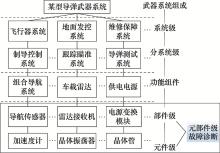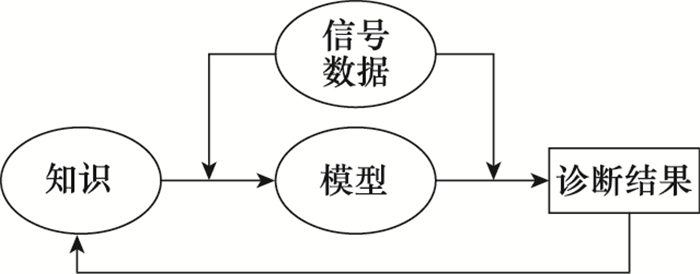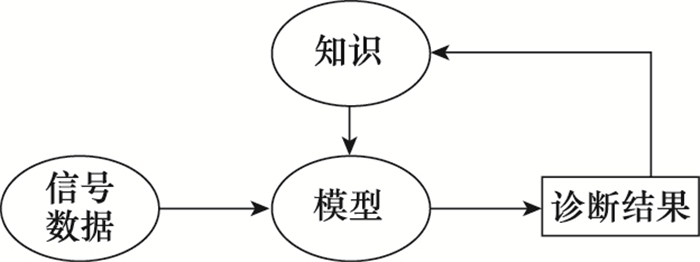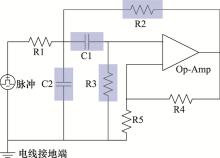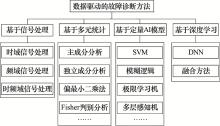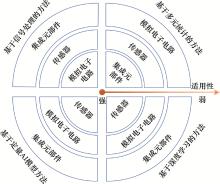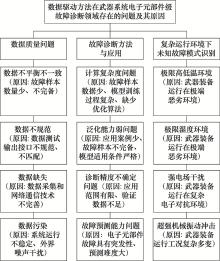Systems Engineering and Electronics ›› 2021, Vol. 43 ›› Issue (2): 574-583.doi: 10.12305/j.issn.1001-506X.2021.02.33
• Reliability • Previous Articles Next Articles
Review on data-driven fault diagnosis for electronic components and units level of weapon system
Chen MENG1( ), Huahui YANG1(
), Huahui YANG1( ), Cheng WANG1(
), Cheng WANG1( ), Zheng MA2(
), Zheng MA2( )
)
- 1. Department of Missile Engineering, Army Engineering University, Shijiazhuang 050003, China
2. Military Representative Office in Beijing, Army Equipment Department, Beijing 100012, China
-
Received:2020-04-29Online:2021-02-01Published:2021-03-16
CLC Number:
Cite this article
Chen MENG, Huahui YANG, Cheng WANG, Zheng MA. Review on data-driven fault diagnosis for electronic components and units level of weapon system[J]. Systems Engineering and Electronics, 2021, 43(2): 574-583.
share this article
| 1 | 侯晓东, 王永攀, 杨江平, 等. 基于状态的武器电子装备故障预测研究综述[J]. 系统工程与电子技术, 2018, 40 (2): 360- 367. |
| HOU X D , WANG Y P , YANG J P , et al. Research summary of weapon electronic equipment fault prediction based on state[J]. Systems Engineering and electronics, 2018, 40 (2): 360- 367. | |
| 2 | 文成林, 吕菲亚, 包哲静, 等. 基于数据驱动的微小故障诊断方法综述[J]. 自动化学报, 2016, 42 (9): 1285- 1299. |
| WEN C L , LYU F Y , BAO Z J , et al. A review of data driven-based incipient fault diagnosis[J]. Acta Automatica Sinica, 2016, 42 (9): 1285- 1299. | |
| 3 | 文成林, 吕菲亚. 基于深度学习的故障诊断方法综述[J]. 电子与信息学报, 2020, 42 (1): 234- 248. |
| WEN C L , LYU F Y . Review on deep learning based fault diagnosis[J]. Journal of Electronic & Information Technology, 2020, 42 (1): 234- 248. | |
| 4 | 苗建国, 王剑宇, 张恒, 等. 无人机故障诊断技术研究进展概述[J]. 仪器仪表学报, 2020, 41 (9): 56- 59. |
| MIAO J G , WANG J Y , ZHANG H , et al. Review of the development of fault diagnosis technology for unmanned aerial vehicle[J]. Chinese Journal of Scientific Instrument, 2020, 41 (9): 56- 59. | |
| 5 |
ZHANG W T , YANG D , WANG H C . Data-driven methods for predictive maintenance of industrial equipment: a survey[J]. IEEE Systems Journal, 2019, 13 (3): 2213- 2227.
doi: 10.1109/JSYST.2019.2905565 |
| 6 |
XU Y , SUN Y M , WAN J F , et al. Industrial big data for fault diagnosis: taxonomy, review, and applications[J]. IEEE Access, 2017, 5, 17368- 17380.
doi: 10.1109/ACCESS.2017.2731945 |
| 7 |
CHANG B L , YANG R F , GUO C X , et al. A new application of optimized random forest algorithms in intelligent fault location of rudders[J]. IEEE Access, 2019, 7, 94276- 94283.
doi: 10.1109/ACCESS.2019.2926109 |
| 8 |
CAI J Y , HAN C H , MENG Y F . Analog circuit testability for fault diagnosis[J]. Tsinghua Science and Technology, 2007, 12 (S1): 270- 274.
doi: 10.1016/S1007-0214(07)70123-2 |
| 9 |
ZHANG H , LIANG J , ZHANG Z Y . Active fault tolerant control of adaptive cruise control system considering vehicle-borne millimeter wave radar sensor failure[J]. IEEE Access, 2020, 8, 11228- 11240.
doi: 10.1109/ACCESS.2020.2964947 |
| 10 |
TIDRIRI K , CHATTI N , VERRON S , et al. Bridging data-driven and model-based approaches for process fault diagnosis and health monitoring: a review of researches and future challenges[J]. Annual Review in Control, 2016, 42, 63- 81.
doi: 10.1016/j.arcontrol.2016.09.008 |
| 11 |
FREIRE N M A , ESTIMA J O , CARDOSO A J M . A voltage-based approach without extra hardware for open-circuit fault diagnosis in closed-loop PWM AC regenerative drives[J]. IEEE Trans.on Industrial Electronics, 2014, 61 (9): 4960- 4970.
doi: 10.1109/TIE.2013.2279383 |
| 12 |
WANG L , PAN J , GAO Y F , et al. Incipient fault diagnosis of limit switch based on a ARMA model[J]. Measurement, 2019, 135, 473- 480.
doi: 10.1016/j.measurement.2018.11.080 |
| 13 | MAHAPATRO A , KHILAR P M . Fault diagnosis in wireless sensor networks: a survey[J]. Communications Surveys & Tutorials, 2013, 15 (4): 2000- 2026. |
| 14 |
YIN S , DING S X , XIE X C , et al. A review on basic data-driven approaches for industrial process monitoring[J]. IEEE Trans.on Industrial Electronics, 2014, 61 (11): 6418- 6428.
doi: 10.1109/TIE.2014.2301773 |
| 15 | DAI X W , GAO Z W . From model, signal to knowledge: a data-driven perspective of fault detection and diagnosis[J]. IEEE Trans.on Industrial Informatics, 2018, 9 (4): 2226- 2238. |
| 16 | MOSTAFA M Z , KHATER H A , RIZK M R , et al. GPS/DVL/MEMS-INS smartphone sensors integrated method to enhance USV navigation system based on adaptive DSFCF[J]. IET Radar, Sonar & Navigation, 2017, 13 (10): 1616- 1627. |
| 17 | BU J , SUN R , BAI H Y , et al. Integrated method for the UAV navigation sensor anomaly detection[J]. IET Radar Sonar & Navigation, 2017, 11 (5): 847- 853. |
| 18 |
SHAN G L , XU G G , QIAO C L . A non-myopic scheduling method of radar sensors for maneuvering target tracking and radiation control[J]. Defence Technology, 2020, 16 (1): 242- 250.
doi: 10.1016/j.dt.2019.10.001 |
| 19 |
SHIROKOV L E . Integrated aircraft control for rendezvous of aircraft-launched missiles with radiating targets[J]. Journal of Computer and Systems Sciences International Volume, 2014, 53 (2): 291- 304.
doi: 10.1134/S1064230714020142 |
| 20 |
MINOR C P , STEINHURST D A , JOHNSON K J , et al. A full-scale prototype multisensor system for damage control and situatio-nal awareness[J]. Fire Technology, 2010, 46 (2): 437- 469.
doi: 10.1007/s10694-009-0103-y |
| 21 | GUO C J , LI F , TIAN Z , et al. Intelligent active fault-tolerant system for multi-source integrated navigation system based on deep neural network[J]. Neural Computing and Applications, 2019, 32, 16857- 16874. |
| 22 | XU H W , LIAN B W . Fault detection for multi-source integrated navigation system using fully convolutional neural network[J]. IET Radar Sonar & Navigation, 2018, 12 (7): 774- 782. |
| 23 |
SUN R , CHENG Q , WANG G Y , et al. A novel online data-driven algorithm for detecting UAV navigation sensor faults[J]. Sensors, 2017, 17 (10): 2243.
doi: 10.3390/s17102243 |
| 24 | FRAVOLINI M L , CORE G D , PAPA U , et al. Data-driven schemes for robust fault detection of air data system sensors[J]. IEEE Trans.on Control Systems Technology, 2017, 27 (1): 234- 248. |
| 25 |
SAMARA P A , FOUSKITAKIS G N , SAKELLARIOU J S , et al. A statistical method for the detection of sensor abrupt faults in aircraft control systems[J]. IEEE Trans.on Control Systems Technology, 2008, 16 (4): 789- 798.
doi: 10.1109/TCST.2007.903109 |
| 26 | GOU B , XU Y , XIA Y , et al. An intelligent time-adaptive data-driven method for sensor fault diagnosis in induction motor drive system[J]. IEEE Trans.on Industrial Electronics, 2018, 66 (12): 9817- 9827. |
| 27 | DONG L , JATSKEVICH J , HUANG Y , et al. Fault diagnosis and signal reconstruction of hall sensors in brushless permanent magnet motor drives[J]. IEEE Trans.on Energy Conversion, 2015, 31 (1): 118- 131. |
| 28 |
BINU D , KARIYAPPA B S . A survey on fault diagnosis of analog circuits: taxonomy and state of the art[J]. AEU-International Journal of Electronics and Communications, 2017, 73, 68- 83.
doi: 10.1016/j.aeue.2017.01.002 |
| 29 |
ZHANG T W , LI T J . A novel approach of analog circuit fault diagnosis utilizing RFT noise estimation[J]. Analog Integrated Circuits and Signal Processing, 2019, 98 (3): 517- 526.
doi: 10.1007/s10470-018-1351-x |
| 30 |
ZHAO G Q , LIU X Y , ZHANG B , et al. A novel approach for analog circuit fault diagnosis based on deep belief network[J]. Measurement, 2018, 121, 170- 178.
doi: 10.1016/j.measurement.2018.02.044 |
| 31 | ABDERRAZAK A , NACERDINE B , ABDESSLAM B , et al. An accurate classifier based on adaptive neuro-fuzzy and features selection techniques for fault classification in analog circuits[J]. Integration, 2019, 64, 50- 59. |
| 32 |
YANG H H , MENG C , WANG C . Data-driven feature extraction for analog circuit fault diagnosis using 1-D convolutional neural network[J]. IEEE Access, 2020, 8, 18305- 18315.
doi: 10.1109/ACCESS.2020.2968744 |
| 33 | GAN X S , GAO W M , DAI Z , et al. Research on WNN soft fault diagnosis for analog circuit based on adaptive UKF algorithm[J]. Applied Soft Computing, 2016, 50, 252- 259. |
| 34 |
YUAN Z J , HE Y G , YUAN L F , et al. An efficient feature extraction approach based on manifold learning for analogue circuits fault diagnosis[J]. Analog Integrated Circuits and Signal Processing, 2020, 102 (1): 237- 252.
doi: 10.1007/s10470-018-1377-0 |
| 35 |
XIA J H , GUO Y B , DAI B J , et al. Sensor fault diagnosis and system reconfiguration approach for an electric traction PWM rectifier based on sliding mode observer[J]. IEEE Trans.on Industry Applications, 2017, 53 (5): 4768- 4778.
doi: 10.1109/TIA.2017.2715816 |
| 36 |
WU F , ZHAO J . A real-time multiple open-circuit fault diagnosis method in voltage-source-inverter fed vector controlled drives[J]. IEEE Trans.on Power Electronics, 2016, 31 (2): 1425- 1437.
doi: 10.1109/TPEL.2015.2422131 |
| 37 | WU F , ZHAO J , LIU Y , et al. Primary source inductive energy analysis based real-time multiple open-circuit fault diagnosis in two-level three-phase PWM boost rectifier[J]. IEEE Trans.on Power Electronics, 2017, 33 (4): 3411- 3424. |
| 38 |
CHENG S , LI W , DING R J , et al. Fault diagnosis and fault-tolerant control scheme for open-circuit faults in three-stepped bridge converters[J]. IEEE Trans.on Power Electronics, 2017, 32 (3): 2203- 2214.
doi: 10.1109/TPEL.2016.2558491 |
| 39 |
YAN H , XU Y X , CAI F Y , et al. PWM-VSI fault diagnosis for a PMSM drive based on the fuzzy logic approach[J]. IEEE Trans.on Power Electronics, 2019, 34 (1): 759- 768.
doi: 10.1109/TPEL.2018.2814615 |
| 40 |
YANG C , GUI W H , CHEN Z W , et al. Voltage difference residual-based open-circuit fault diagnosis approach for three-level converters in electric traction systems[J]. IEEE Trans.on Power Electronics, 2020, 35 (3): 3012- 3028.
doi: 10.1109/TPEL.2019.2924487 |
| 41 |
HU M , WANG H , HU G , et al. Soft fault diagnosis for analog circuits based on slope fault feature and BP neural networks[J]. Tsinghua Science and Technology, 2007, 12 (S1): 26- 31.
doi: 10.1016/S1007-0214(07)70079-2 |
| 42 |
RUAN S , ZHOU Y K , YU F L , et al. Dynamic multiple-fault diagnosis with imperfect tests[J]. IEEE Trans.on Systems, Man and Cybernetics, Part A: Systems and Humans, 2009, 39 (6): 1224- 1236.
doi: 10.1109/TSMCA.2009.2025572 |
| 43 |
SINGH S , KODALI A , CHOI K , et al. Dynamic multiple fault diagnosis: mathematical formulations and solution techniques[J]. IEEE Trans.on Systems Man and Cybernetics-Part a Systems and Humans, 2009, 39 (1): 160- 176.
doi: 10.1109/TSMCA.2008.2007986 |
| 44 |
WU F , ZHAO J . Current similarity analysis based open-circuit fault diagnosis for two-level three-phase PWM rectifier[J]. IEEE Trans.on Power Electronics, 2017, 32 (5): 3935- 3945.
doi: 10.1109/TPEL.2016.2587339 |
| 45 |
VONG C M , WONG P K , IP W F . A new framework of simultaneous-fault diagnosis using pairwise probabilistic multi-label classification for time-dependent patterns[J]. IEEE Trans.on Industrial Electronics, 2013, 60 (8): 3372- 3385.
doi: 10.1109/TIE.2012.2202358 |
| 46 |
CHOQUEUSE V , BENBOUZID M E H , AMIRAT Y , et al. Diagnosis of three-phase electrical machines using multidimensional demodulation techniques[J]. IEEE Trans.on Industrial Electronics, 2012, 59 (4): 2014- 2023.
doi: 10.1109/TIE.2011.2160138 |
| 47 | YANG T , PEN H B , WANG Z X , et al. Feature knowledge based fault detection of induction motors through the analysis of stator current data[J]. IEEE Trans.on Instrumentation & Measurement, 2016, 65 (3): 549- 558. |
| 48 |
LEE J M , YOO C K , LEE I B . Statistical process monitoring with independent component analysis[J]. Journal of Process Control, 2004, 14 (5): 467- 485.
doi: 10.1016/j.jprocont.2003.09.004 |
| 49 |
MURADORE R . A PLS-based statistical approach for fault detection and isolation of robotic manipulators[J]. IEEE Trans.on Industrial Electronics, 2012, 59 (8): 3167- 3175.
doi: 10.1109/TIE.2011.2167110 |
| 50 |
YIN S , ZHU X P , KAYNAK O . Improved PLS focused on key-performance-indicator-related fault diagnosis[J]. IEEE Trans.on Industrial Electronics, 2015, 62 (3): 1651- 1658.
doi: 10.1109/TIE.2014.2345331 |
| 51 |
ZHONG K , HAN M , QIU T , et al. Fault diagnosis of complex processes using sparse kernel local fisher discriminant analy-sis[J]. IEEE Trans.on Neural Networks and Learning Systems, 2020, 31 (5): 1581- 1591.
doi: 10.1109/TNNLS.2019.2920903 |
| 52 | FENG J , WANG J , ZHANG H G , et al. Fault diagnosis method of joint fisher discriminant analysis based on the local and global manifold learning and its kernel version[J]. IEEE Trans.on Automation Science & Engineering, 2016, 13 (1): 122- 133. |
| 53 |
DELPHA C , DIALLO D , SAMROUT H A , et al. Multiple incipient fault diagnosis in three-phase electrical systems using multivariate statistical signal processing[J]. Engineering Applications of Artificial Intelligence, 2018, 73, 68- 79.
doi: 10.1016/j.engappai.2018.04.007 |
| 54 |
PILARIO K E S , CAO Y . Canonical variate dissimilarity analysis for process incipient fault detection[J]. IEEE Trans.on Industrial Informatics, 2018, 14 (12): 5308- 5315.
doi: 10.1109/TII.2018.2810822 |
| 55 |
SHI J Y , HE Q J , WANG Z L . GMM clustering-based decision trees considering fault rate and cluster validity for analog circuit fault diagnosis[J]. IEEE Access, 2019, 7, 140637- 140650.
doi: 10.1109/ACCESS.2019.2943380 |
| 56 |
YIN S , HUANG Z H . Performance monitoring for vehicle suspension system via fuzzy positivistic C-means clustering based on accelerometer measurements[J]. IEEE/ASME Trans.on Mechatronics, 2015, 20 (5): 2613- 2620.
doi: 10.1109/TMECH.2014.2358674 |
| 57 |
YIN S , ZHU X P , JING C . Fault detection based on a robust one class support vector machine[J]. Neurocomputing, 2014, 145, 263- 268.
doi: 10.1016/j.neucom.2014.05.035 |
| 58 | HE Y , DU C Y , LI C B , et al. Sensor fault diagnosis of superconducting fault current limiter with saturated iron core based on SVM[J]. IEEE Trans.on Applied Superconductivity, 2014, 24 (5): 5602805. |
| 59 |
ZIDI S , MOULAHI T , ALAYA B . Fault detection in wireless sensor networks through SVM classifier[J]. IEEE Sensors Journal, 2018, 18 (1): 340- 347.
doi: 10.1109/JSEN.2017.2771226 |
| 60 | SUO M L , ZHU B L , AN R M , et al. Data-driven fault diagnosis of satellite power system using fuzzy Bayes risk and SVM[J]. Aerospace Science & Technology, 2019, 84, 1092- 1105. |
| 61 |
CHEN P , YUAN L F , HE Y G , et al. An improved SVM classifier based on double chains quantum genetic algorithm and its application in analogue circuit diagnosis[J]. Neurocompu-ting, 2016, 211, 202- 211.
doi: 10.1016/j.neucom.2015.12.131 |
| 62 |
KURAKU N V P , HE Y , SHI T , et al. Fuzzy logic based open-circuit fault diagnosis in IGBT for CMLI fed PMSM drive[J]. Microelectronics Reliability, 2019, 100-101, 113415.
doi: 10.1016/j.microrel.2019.113415 |
| 63 |
KUMAR A , SINGH A P . Fuzzy classifier for fault diagnosis in analog electronic circuits[J]. ISA Transactions, 2013, 52 (6): 816- 824.
doi: 10.1016/j.isatra.2013.06.006 |
| 64 |
YU W X , SUI Y , WANG J . The faults diagnostic analysis for analog circuit based on FA-TM-ELM[J]. Journal of Electronic Testing, 2016, 32 (4): 459- 465.
doi: 10.1007/s10836-016-5597-x |
| 65 |
GAN X S , QU H , MENG X W , et al. Research on ELM soft fault diagnosis of analog circuit based on KSLPP feature extraction[J]. IEEE Access, 2019, 7, 92517- 92527.
doi: 10.1109/ACCESS.2019.2923242 |
| 66 |
MAIDEN Y , JERVIS B W , DUTTON N , et al. Diagnosis of multifaults in analogue circuits using multilayer perceptrons[J]. IEE Proceedings-Circuits Devices and Systems, 1997, 144 (3): 149- 154.
doi: 10.1049/ip-cds:19971146 |
| 67 |
YU S , JERVIS B W , ECKERSALL K R , et al. Diagnosis of CMOS op-amps with gate oxide short faults using multilayer perceptrons[J]. IEEE Trans.on Computer-Aided Design of Integrated Circuits and Systems, 1997, 16 (8): 930- 935.
doi: 10.1109/43.644623 |
| 68 | SONG P , HE Y Z , CUI W J . Statistical property feature extraction based on FRFT for fault diagnosis of analog circuits[J]. Analog Integrated Circuits & Signal Processing, 2016, 87 (3): 427- 436. |
| 69 |
LUO H , WANG Y R , CUI J . A SVDD approach of fuzzy classification for analog circuit fault diagnosis with FWT as preprocessor[J]. Expert Systems with Applications, 2011, 38 (8): 10554- 10561.
doi: 10.1016/j.eswa.2011.02.087 |
| 70 |
JEONG K , CHOI S B , CHOI H . Sensor fault detection and isolation using a support vector machine for vehicle suspension systems[J]. IEEE Trans.on Vehicular Technology, 2020, 69 (4): 3852- 3863.
doi: 10.1109/TVT.2020.2977353 |
| 71 |
JAN S U , LEE Y D , SHIN J , et al. Sensor fault classification based on support vector machine and statistical time-domain features[J]. IEEE Access, 2017, 5, 8682- 8690.
doi: 10.1109/ACCESS.2017.2705644 |
| 72 |
JIANG Q C , YAN S F , YAN X F , et al. Data-driven two-dimensional deep correlated representation learning for nonlinear batch process monitoring[J]. IEEE Trans.on Industrial Informatics, 2020, 16 (4): 2839- 2848.
doi: 10.1109/TII.2019.2952931 |
| 73 |
ZHANG C L , HE Y G , YUAN L F , et al. Analog circuit incipient fault diagnosis method using DBN based features extraction[J]. IEEE Access, 2018, 6, 23053- 23064.
doi: 10.1109/ACCESS.2018.2823765 |
| 74 |
SHI T C , HE Y G , WANG T , et al. Open switch fault diagnosis method for PWM voltage source rectifier based on deep learning approach[J]. IEEE Access, 2019, 7, 66595- 66608.
doi: 10.1109/ACCESS.2019.2917311 |
| 75 |
WANG Z S , LIU L , ZHANG H G . Neural network-based model-free adaptive fault-tolerant control for discrete-time nonlinear systems with sensor fault[J]. IEEE Trans.on Systems, Man, and Cybernetics, 2017, 47 (8): 2351- 2362.
doi: 10.1109/TSMC.2017.2672664 |
| 76 | 陈彧赟, 侯博文, 何章鸣, 等. 数据驱动的复杂系统非预期故障诊断通用过程模型[J]. 国防科技大学学报, 2017, 39 (6): 126- 133. |
| CHEN Y Y , HOU B W , HE Z M , et al. General process mo-del for unanticipated fault diagnosis of complex system based on data driven[J]. Journal of National University of Defense Technology, 2017, 39 (6): 126- 133. |
| [1] | Sheng GAO, Guangfu MA, Yanning GUO. Fast reconstruction of multiple faults based on adaptive unknown input observer [J]. Systems Engineering and Electronics, 2022, 44(7): 2364-2373. |
| [2] | Zhaoguo HOU, Huawei WANG, Liang ZHOU, Qiang FU. Fault diagnosis of rotating machinery based on improved deep residual network [J]. Systems Engineering and Electronics, 2022, 44(6): 2051-2059. |
| [3] | Jia HUANG, Sijiang CHANG. Data-driven method based impact time and impact angle control guidance law [J]. Systems Engineering and Electronics, 2022, 44(10): 3213-3220. |
| [4] | Zhiwei CHEN, Jing WANG, Changchao GU, Jianchun ZHANG, Jilong ZHONG. Performance availability and resilience analysis of weapon system of systems considering dynamic reconfiguration [J]. Systems Engineering and Electronics, 2021, 43(8): 2347-2354. |
| [5] | Ruifeng LI, Aiqiang XU, Weichao SUN, Shuyou WANG. Recommendation method for avionics feature selection algorithm basedon meta-learning [J]. Systems Engineering and Electronics, 2021, 43(7): 2011-2020. |
| [6] | Yuqi CHEN, Tingxue XU, Jianping HAO, Cheng LU, Zhiqiang LI. Task capability dependency analysis of weapon system of systems based on FDN [J]. Systems Engineering and Electronics, 2021, 43(6): 1721-1728. |
| [7] | Li WANG, Ziqi LIU. Fault diagnosis of analog circuit for WPA-IGA-BP neural network [J]. Systems Engineering and Electronics, 2021, 43(4): 1133-1143. |
| [8] | Jinling DAI, Aiqiang XU. Local multiple kernel extreme learning machine fault diagnosis model with dynamic fuzzy clustering for avionics [J]. Systems Engineering and Electronics, 2021, 43(3): 637-646. |
| [9] | Liu YANG, Weigang ZHU, Shouye LYU, Shuang MA. Waveform unit extraction method for non-cooperative multi-function radar [J]. Systems Engineering and Electronics, 2021, 43(10): 2843-2850. |
| [10] | Yunfei MA, Xisheng JIA, Huajun BAI, Chiming GUO, Shuangchuan WANG. Fault diagnosis of compressed vibration signal based on 1-dimensional CNN with optimized parameters [J]. Systems Engineering and Electronics, 2020, 42(9): 1911-1919. |
| [11] | Bo LI, Lin ZHANG, Wenfeng WANG, Guannan WANG. Fault feature extraction method based on Park-HHT [J]. Systems Engineering and Electronics, 2020, 42(12): 2944-2952. |
| [12] | YOU Yaqian, JIANG Jiang, SUN Jianbin, ZHAO Danling, YANG Kewei. Evidential network-based evaluation method of contribution to weapon system-of-systems [J]. Systems Engineering and Electronics, 2019, 41(8): 1780-1788. |
| [13] | GE Bingfeng, LI Jichao, ZHAO Danling, YANG Kewei, TAN Yuejin. Meta-path based link prediction approach for weapon system-of-systems combat networks [J]. Systems Engineering and Electronics, 2019, 41(5): 1028-1033. |
| [14] | YAO Tianle, TAO Fenghe, HU Qiwei, QI Ziyuan, WEN Liang. Assessment of weapon system combat capability of main battle tank based on multi attribute utility [J]. Systems Engineering and Electronics, 2019, 41(2): 358-364. |
| [15] | DOU Yajie, XU Xiangqian, ZHOU Zhexuan, XIA Boyuan, YANG Kewei. Analysis of system portfolio selection and typical military application [J]. Systems Engineering and Electronics, 2019, 41(12): 2754-2762. |
| Viewed | ||||||
|
Full text |
|
|||||
|
Abstract |
|
|||||
